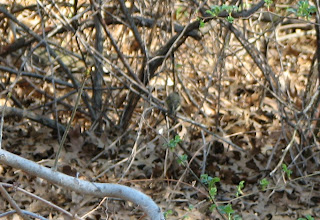 Then I look for the tell-tale "yellow rump" and yellow mark on its crown:
Then I look for the tell-tale "yellow rump" and yellow mark on its crown:
 Next I look for the yellow markings on the sides of its breast:
Next I look for the yellow markings on the sides of its breast:
 Here are some other great pictures I think help give different perspectives of the bird:
Here are some other great pictures I think help give different perspectives of the bird:
 Then I look for the tell-tale "yellow rump" and yellow mark on its crown:
Then I look for the tell-tale "yellow rump" and yellow mark on its crown:
 Next I look for the yellow markings on the sides of its breast:
Next I look for the yellow markings on the sides of its breast:
 Here are some other great pictures I think help give different perspectives of the bird:
Here are some other great pictures I think help give different perspectives of the bird:

I've seen Golden-crowned Kinglets at the Charles River before, but this was my first Ruby-crowned! I consider it a lifer since I have no memory of seeing this one a year ago and the pictures in my previous post are blurry as you can see. Kinglets are just too damn quick- they're fun to watch but impossible to photograph. That's when I know I've really made it as a bird photographer...I'll have crisp beautiful ruby-crowned and golden-crowned kinglets pictures to post on my blog :)
Then when I got to the stand of trees I heard the kinglets again, stopped to watch them and then saw a yellow Palm Warbler (lifer):

 Finally, I saw a yellow-rumped warbler, which I've seen in this stretch of the Charles River before:
Finally, I saw a yellow-rumped warbler, which I've seen in this stretch of the Charles River before:


 Source: Isidor Jeklin/Cornell Lab of Ornithology
Source: Isidor Jeklin/Cornell Lab of OrnithologyI'm very excited about this because we just put up our Bluebird House a few weeks ago and I hope we get some Bluebirds in there. Steve said he saw evidence of grass/vegetation in the birdhouse, and I've seen some chickadees peeking in there and checking it out. I hope we get any kind of bird to nest there, but it would be exciting if it was a Bluebird because now that I've seen one I can't wait to spot more.

Some interesting red-winged blackbird habits taken from Cornell Lab of Ornithology:
I find that last habit really fascinating. I can't believe that they gather in groups that large. They apparently roost with other blackbird species and European Starlings which makes me find the several million number easier to believe if the group includes those species also.
Here is an immature male red-winged black bird picture from our trip to Mt. Auburn Cemetery last weekend:
 This was a tough ID for me--I should have known by the white mark on its wing. Learn something new every day!
This was a tough ID for me--I should have known by the white mark on its wing. Learn something new every day!

 And how ironic that these pictures are of my black oil sunflower seed feeder...But I stand by my argument that the thistle feeder is what drew them to my yard!
And how ironic that these pictures are of my black oil sunflower seed feeder...But I stand by my argument that the thistle feeder is what drew them to my yard!
 I also was watching a song sparrow down along the Town River. It was first in a bush on the marsh side of the river (where I got this picture) then flew down to the bank of the opposite side of the river and eventually up to a tree where it resumed singing.
I also was watching a song sparrow down along the Town River. It was first in a bush on the marsh side of the river (where I got this picture) then flew down to the bank of the opposite side of the river and eventually up to a tree where it resumed singing.


Source: CapeCodOnline.com Editorial Cartoons
There's a piping plover nesting area at the Spit, and this cartoon is not too far off from reality. During the most critical time of nesting season there are Audubon volunteers who actually patrol the roped-off area to make sure dogs and children don't trample the nests. Not only do they patrol the borders of the nesting site, they also provide educational pamphlets explaining why that area is off-limits.
I know I have video footage and pictures of piping plovers on Martha's Vineyard and in North Truro but I guess I haven't posted them yet. I just have pictures of a pacific golden plover in Hawaii, and a semipalmated plover in East Sandwich. I'll have to go through my laptop at home and find them. Actually, an interesting fact about the semipalmated plover- semipalmated means "half-webbed" referring to its two toes.